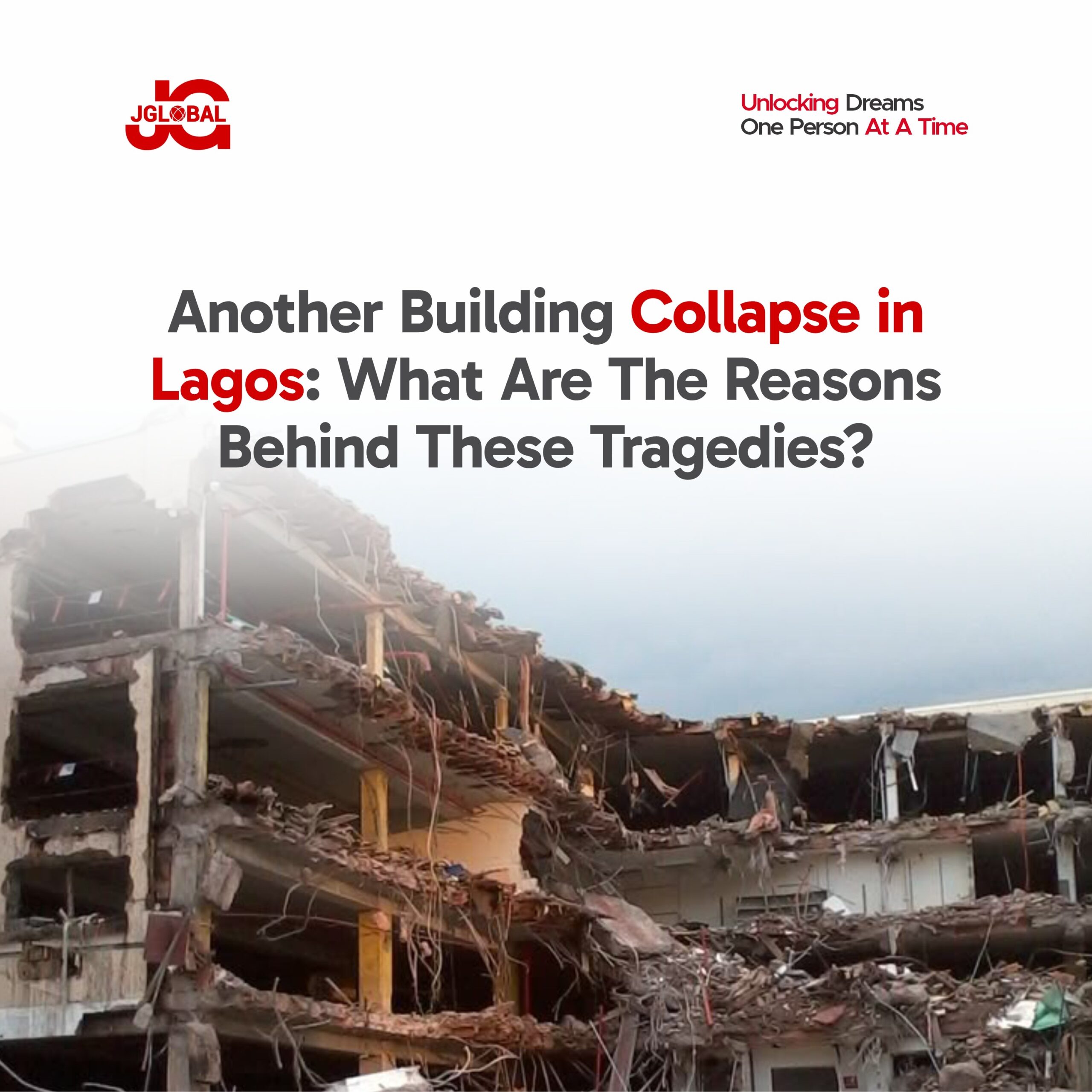Another Building Collapse in Lagos: What Are The Reasons Behind These Tragedies?

Introduction
Building collapses are becoming a frequent tragedy. These incidents not only lead to loss of lives but also expose deep flaws in the construction sector. Despite ongoing discussions and efforts, the problem persists, leaving many to wonder why buildings keep failing. Addressing this issue requires a closer look at the key factors that contribute to these collapses and what can be done to prevent them.
Lagos is a city of rapid urban growth, where new buildings rise every day to accommodate its expanding population. However, with this fast-paced development comes an increasing number of structural failures. Many of these collapses are not sudden or mysterious; they are the result of a combination of factors that build up over time. From material quality to regulatory oversight, several challenges continue to put buildings at risk. Understanding these causes is the first step toward finding long-term solutions.
Factors Contributing to Building Collapses in Lagos
1. The Impact of High Material Costs
The rising cost of construction materials has placed significant pressure on suppliers and builders. To cope with these expenses, some suppliers purchase lower-grade materials and sell them as standard. Unfortunately, distinguishing between genuine and substandard materials is difficult without proper testing, making it easy for these materials to find their way into construction projects. For instance, cement, steel reinforcements, and concrete blocks that do not meet the required strength can weaken a building’s foundation and structural framework. Over time, this compromises the integrity of the entire structure, making it more vulnerable for the building to collapse.
2. Design and Engineering Challenges
A building’s strength relies heavily on its design and engineering. Proper load calculations, structural reinforcements, and adherence to architectural plans are essential for safety. However, mistakes in these critical areas can lead to serious issues. If the foundation is not deep enough, columns are not properly positioned, or reinforcement is inadequate, the building may not withstand environmental pressures like heavy rainfall, strong winds, or additional weight, hence, causing buildings to collapse.
Additionally, unexpected modifications such as adding extra floors or altering the original design without proper reinforcement can overstress the structure, making it more prone to failure over time.
3. Regulatory Oversight and Monitoring Gaps
Lagos has strict building codes and approval processes designed to ensure safe construction. However, enforcement remains a major challenge. With thousands of buildings being constructed simultaneously, regulatory agencies often struggle to inspect all sites thoroughly. This means that some buildings go up without proper approvals or necessary safety checks.
Even when inspections do take place, follow-ups are not always consistent, allowing construction to continue without addressing flagged concerns. In some cases, a building may pass an initial inspection, but due to lack of monitoring during later stages, crucial safety measures may be skipped.
4. Unplanned Building Modifications
Some buildings may be originally designed for a specific purpose and weight capacity. However, over time, some structures are modified in ways that exceed their intended limits. A residential building may be converted into a commercial space, increasing foot traffic and structural load. Additional floors may be added without reinforcing the foundation. These modifications, when carried out without proper engineering assessments, place immense pressure on the building’s structure. Over time, the accumulated stress weakens key support elements, increasing the likelihood of collapse.
5. Lack of Proper Building Maintenance
Even the best-built structures require regular maintenance. Small cracks, water leaks, corrosion of reinforcement bars, and weakening foundations are early warning signs that need attention. However, in many cases, these signs are ignored until they develop into serious problems. Moisture penetration, for instance, can weaken concrete and rust steel reinforcements, gradually reducing the building’s strength. Poor drainage systems can lead to soil erosion around foundations, making the structure unstable. Without timely intervention, such issues compound over the years, making collapse inevitable.
Here are Some Notable Building Collapses that has happened in Lagos
Several major incidents in Lagos highlight the severity of the building collapse crisis:
- March 6, 2025 – Lagos Island Building Collapse: A high-rise building suddenly collapsed in Lagos Island, trapping several occupants under. Early reports suggested that the building had structural weaknesses that had been ignored, and concerns about its stability had previously been raised. Investigations are ongoing, but preliminary findings point to material issues and unaddressed warning signs. Four currently confirmed dead.
- November 1, 2021 – Ikoyi Building Collapse: A 21-story building under construction in Ikoyi collapsed, leading to 44 deaths. It was later revealed that the approved plan allowed for 15 floors, but six extra floors were added without reinforcing the structure, leading to the disaster.
- March 13, 2019 – Ita Faaji School Collapse: A three-story building housing a primary school collapsed, killing 20 people, most of them children. The building had been identified as unsafe years before but continued to be in use until it gave way.
- March 8, 2016 – Lekki Building Collapse: A five-story structure under construction in Lekki collapsed, killing at least 34 people. Investigations revealed that unauthorized modifications had been made to the building, weakening its overall structure.
What is The Way Forward?
To reduce building collapses in Lagos, there must be stricter enforcement of building codes, severe penalties for violators, and mandatory certification for construction professionals. Developers must prioritize safety over cost-cutting, and regulatory bodies must be empowered to carry out frequent site inspections. Building safety is not negotiable. Every collapse represents lost lives and shattered dreams.
Conclusion
The frequent building collapses in Lagos are a sign of deeper issues within the construction sector. While urban expansion is necessary, it should not come at the cost of safety. Addressing this crisis requires a collective effort ensuring that building materials meet standard requirements, strengthening regulatory oversight, encouraging professional engineering practices, and promoting regular maintenance.
Lagos has the potential to develop into a city where structural failures become a thing of the past. However, this will only happen if necessary precautions are taken, and safety is prioritized at every stage of construction. With stricter regulations, better monitoring, and public awareness, future tragedies can be prevented, making Lagos a safer place for all.



